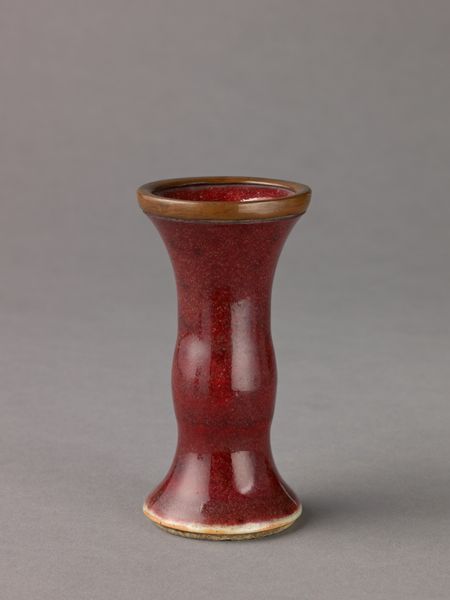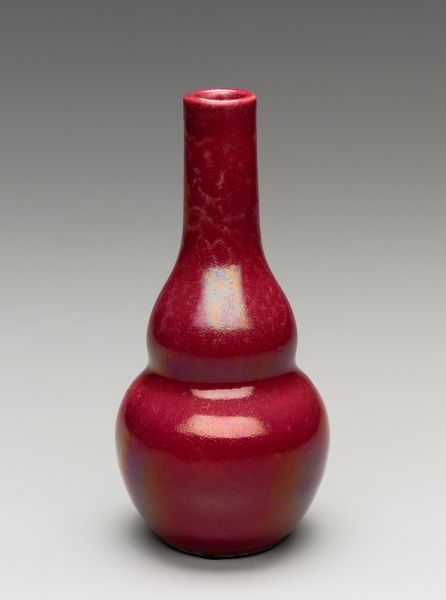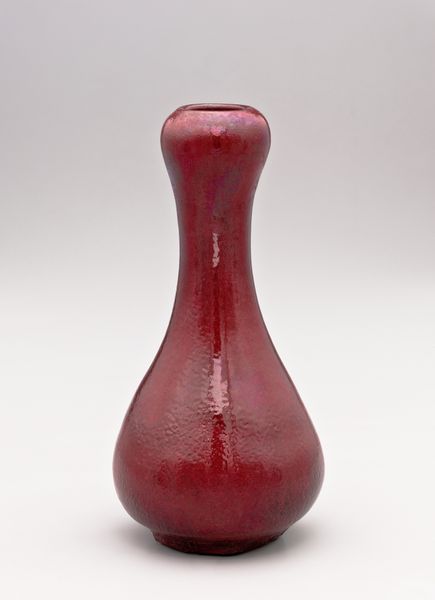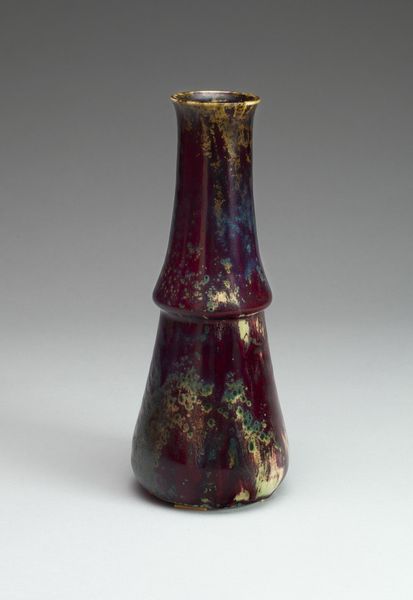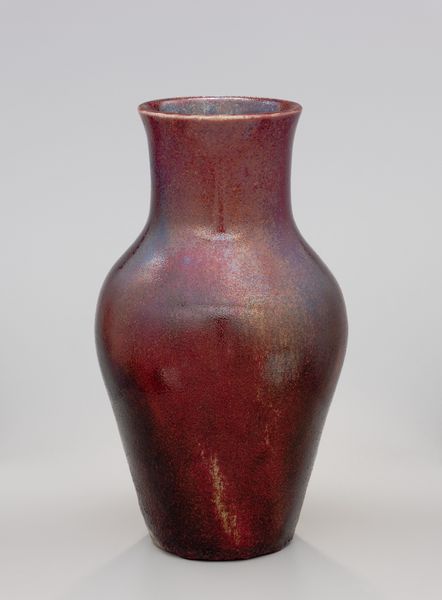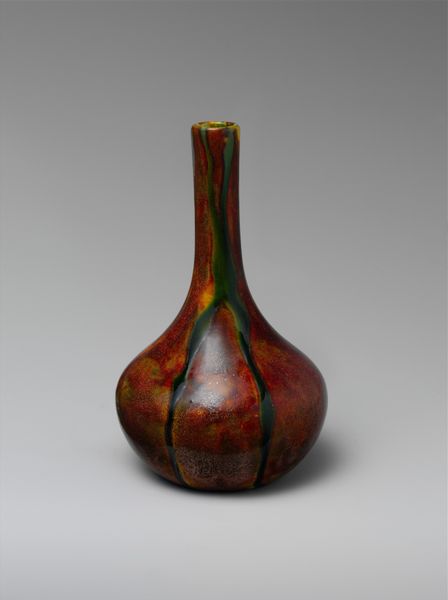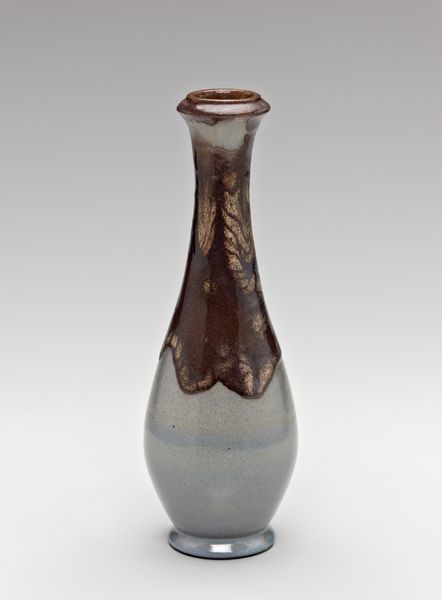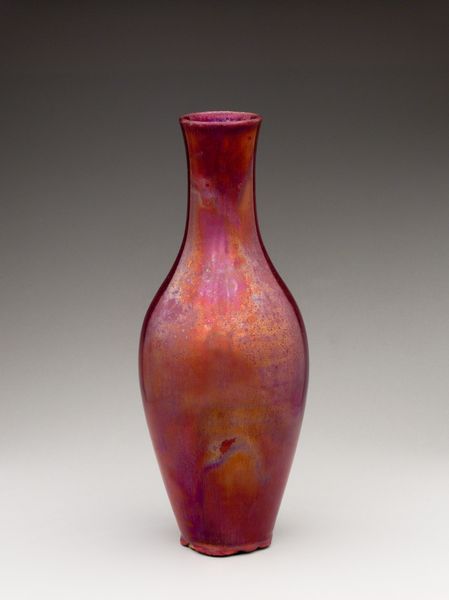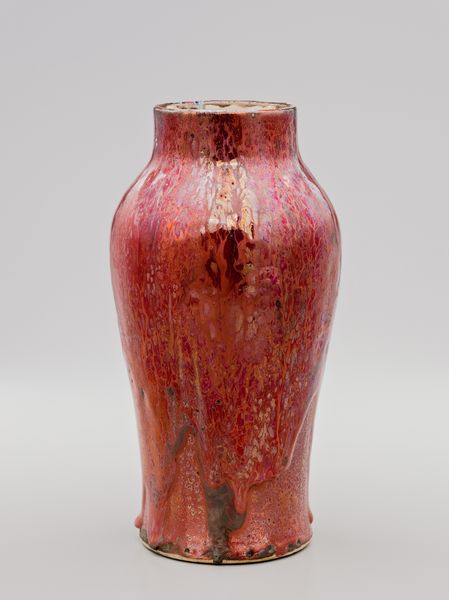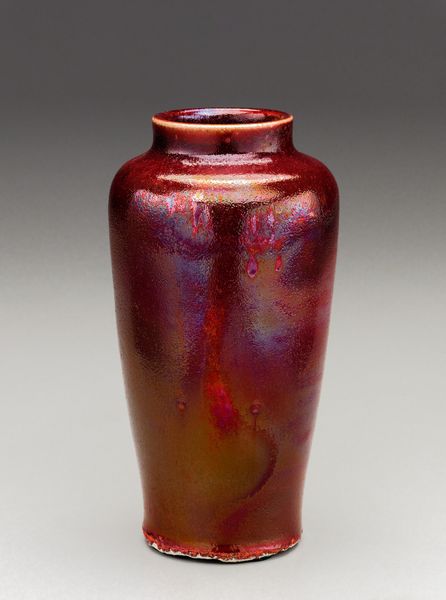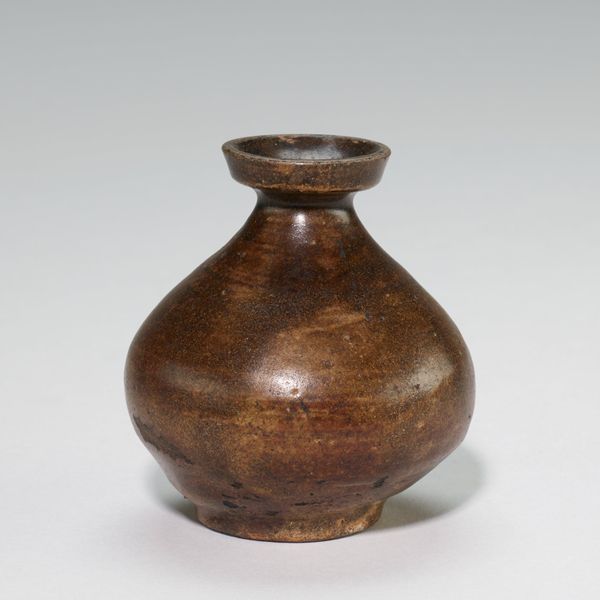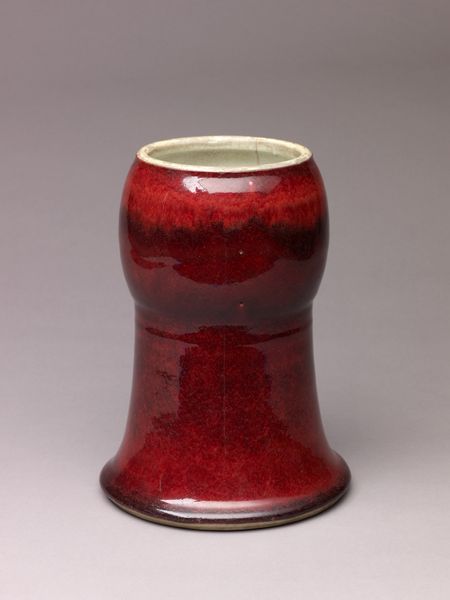
ceramic
#
asian-art
#
ceramic
#
ceramic
Dimensions: Height: 4 1/4 in. (10.8 cm.)
Copyright: Public Domain
Curator: Welcome. We’re standing before a rather lovely piece of Chinese ceramic art, a Small vase created sometime between 1700 and 1800. You can find it here at the Metropolitan Museum of Art. Editor: Immediately striking, isn’t it? That intense crimson hue gives it such a vibrant presence, despite its delicate size. I'm drawn to the surface, it looks almost organic, like textured skin. Curator: Indeed. The shape follows classical lines, yet the high-fired glaze provides that singular character. Look closely; see how the form ascends, moving from bulbous base to narrow, cylindrical neck. The play of convex and concave lends it dynamism, a spatial articulation defining its aesthetic impact. Editor: It makes me wonder about the process involved. What sort of clay did they use? And how many attempts did it take to achieve such a nuanced and rich colour in the firing? The level of expertise... the labour invested in such an object is immense when one thinks about it. Curator: A vital observation. That color is often referred to as “oxblood,” or “sang de boeuf” in French, because of its resemblance to blood. It represents a high point in glaze technology. It symbolizes power and prosperity, both central to dynastic symbolism during that period. Editor: I’d also wager that its small scale had a significant effect on production and display. Intended perhaps for personal spaces rather than grand imperial settings, suggesting a growing merchant class, influencing what goods artisans focused on crafting. The economic currents and desires driving its creation matter deeply. Curator: Absolutely. This ceramic demonstrates how aesthetics can be informed by commerce, production, material availability, and patronage—creating complex dialog. Its beauty is more than formal harmony; it echoes social and historical narratives. Editor: It’s always more, isn't it? Understanding the labor, materials and function shifts your understanding entirely. Thank you for this, a piece like this seems deceptively simple, and yet encapsulates volumes about craft. Curator: A truly compelling dialogue, and that’s where the value lies: learning through the interplay of perspectives.
Comments
No comments
Be the first to comment and join the conversation on the ultimate creative platform.
